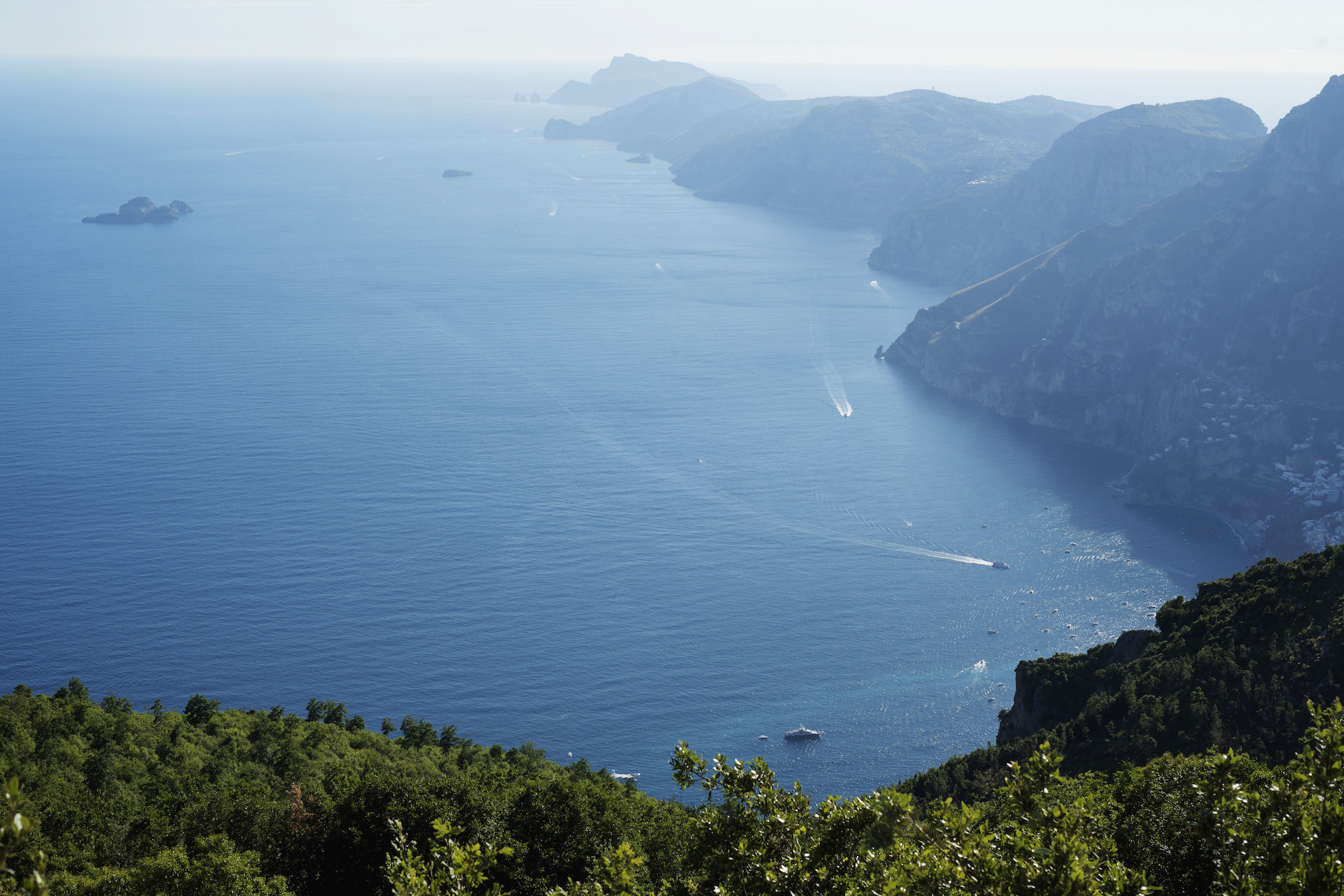In the land of Gods every road or path gives pleasant surprises even to the most distracted eyes.
The view from the path: Li Galli, Capri, Positano e the Sorrentina Peninsula | Ph. Anna Monaco - Trentaremi

An hour away from Naples and Salerno, shielded on its 630 meters high, famous for the fresh and healthy air and the abundance of waters, the town of Agerola opens the doors to the beauty of Gods. From Paolo Capasso square in Bomerano, one of the six villages of the municipality, a hiker can choose whether to walk along the famous Path of Gods, whose beauty is already contained in the name, and reach up to Positano. Or he may opt for a lesser-known route, with a less suggestive name, perhaps a little less accessible, but with a dream landscape: Mount Tre Calli.

«Between stone streets and stairways overlooking cultivated terraces we begin to climb towards the top of the mountain», says Marco, a local guide. The scents of Mediterranean vegetation are unique. Spots of wild orchids color the limits of the path, while goats and cows are the most usual company for those who go along this path. The wooden bundles piled up in some points of the way at the height of Mount Paipo suggest the rhythms of a simple and authentic peasant life.
As you go up, the stone stairs give way to a dirt path, surrounded by a chestnut forest and a dense silence. As we climb, the silence becomes more and more absolute, as the chestnut trees give way to sub-mountain vegetation and an increasingly pungent breeze.

Paipo, Calabrice Mountain, Capo Muro with its characteristic rock mushroom, are the familiar names to those who know this path. The panorama however needs no comment: Agerola, the Gulf of Salerno, the Sorrento Peninsula, Capri. You could sit for hours on top of the Three Calli and observe the limestone cliffs of the mountain that fall sheer above the blue sea. It is a harsh and beautiful landscape that does not allow respite. And this is perhaps the most fascinating trait of the Lattari Mountains: their hardness watches over and seems to protect the Amalfi Coast. Even the name “Tre Calli” excites the imagination.

Even the name “Tre Calli” excites the imagination. «The most common explanation is that looking from the top of the mountain towards the north-west - Marco explains - you can find some little pronounced peaks that look like the calluses of a hand. But Professor Aldo Cinque of the Federico II University - Marco says - clarified that the toponym “Tre Calli” has medieval origins. The top of this mountain chain is made up of four aligned peaks separated by three saddles similar to those of horses, which would be the three calli».

